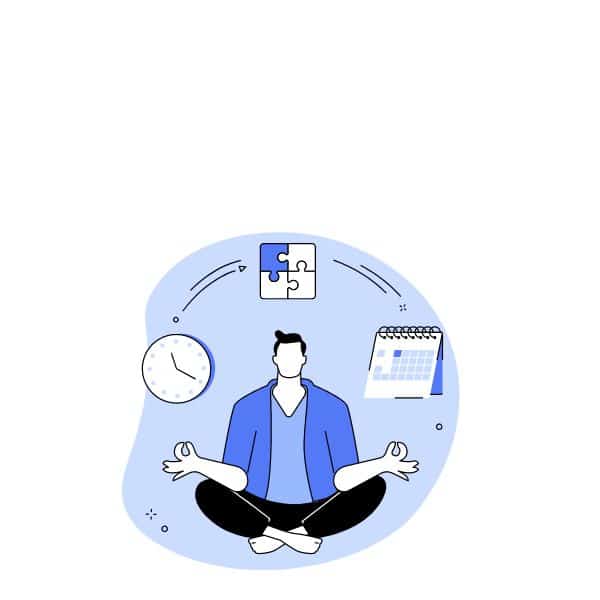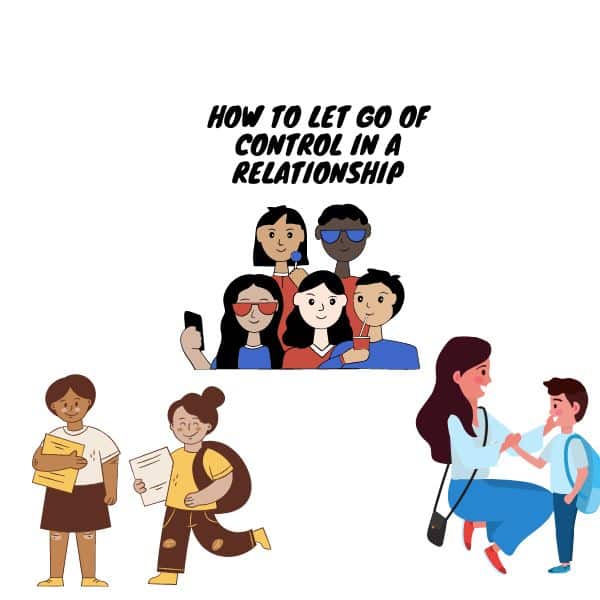Introduction
Control is an intriguing element in relationships. It’s a bit like salt in cooking; a pinch can enhance the flavour, but too much can spoil the entire dish.
Partners naturally have some influence when setting boundaries and norms, but too much control can create an unhealthy imbalance. This imbalance can, over time, erode the very foundation of trust, respect, and love that a relationship stands on. If you tend to control your relationship, here are strategies to help you create a more balanced dynamic. How to Let Go of Control in a Relationship?
Key Insights Table
| Key Point | Description |
|---|---|
| Understanding Control | Control is the exertion of power to manage or direct others’ actions. It can become detrimental when it stifles individuality or induces stress in a relationship. |
| Recognizing Control | Understanding your partner’s perspective can help reduce controlling behaviours. |
| Communication | Open, honest, and respectful conversations can help address control issues and foster mutual understanding. |
| Building Trust | Trust eliminates the need for control. Developing it requires honesty, transparency, and consistency over time. |
| Practice Empathy | Therapy or counselling can offer tools and techniques to change controlling behaviours. |
| Patience and Acceptance | Change takes time. Acceptance of your partner’s individuality and your own personal growth journey is vital. |
| Balancing Power | Equal distribution of decision-making power promotes a healthy, harmonious relationship. |
Delving Deeper into the Concept of Control
Before you can effectively make changes, you need to thoroughly understand the nuances of control in a relationship. Control in this context includes:
- Dictating or excessively influencing your partner’s choices or actions.
- Attempting to shape your partner’s behaviour or personality to fit your ideals.
- Exerting dominance to maintain a position of power in the relationship.
When the desire to control becomes a persistent pattern, it stifles individuality, inducing undue stress and disempowerment in the relationship.
Recognizing Controlling Behaviors

Recognition is the launching pad for transformation. Here’s how you can identify controlling tendencies:
- Excessive criticism: This includes regularly pointing out your partner’s faults or using negative remarks to shape their behaviour.
- Possessiveness: This involves displaying jealousy, limiting your partner’s social interactions, or making them feel guilty for spending time away from you.
- Lack of trust: This includes constantly questioning their actions, invading their privacy, or doubting their judgment.
- Manipulative behaviours: These behaviours can be subtle or overt, aiming to coerce your partner into acting as per your desires.
Recognizing these behaviours within yourself can be a challenging and uncomfortable process. However, it is a critical first step towards letting go of control.
The Power of Open Communication
Constructive communication acts as the bridge connecting the recognition of a problem to a successful resolution. Here’s how to utilize it:
- Initiate the conversation: Open up to your partner about your self-realizations and express your desire to make changes.
- Invite feedback: Ask your partner to share their feelings and experiences. Encourage them to provide feedback on your progress over time.
- Maintain respect: Remember to communicate with love, respect, and humility. This is not a blame game; it’s a process of transformation for the betterment of your relationship.
Building Trust: The Foundation of Relationships

Trust is the cornerstone of any relationship. Here are some ways to build it:
- Be honest: Honesty nurtures trust. Be truthful with your partner, even when it’s uncomfortable.
- Show respect for their autonomy: Respect your partner’s ability to make decisions without your interference.
- Be consistent: Consistency in words and actions over time assures your partner of your sincerity in relinquishing control.
- Demonstrate reliability: Be someone your partner can depend on. Show up when you say you will and fulfil your commitments.
Practising Empathy: Seeing Through Their Eyes
Empathy enables you to understand your partner’s perspective and feelings. Here’s how to enhance your empathetic abilities:
- Listen actively: Pay attention to your partner’s words and the feelings behind them. Ask clarifying questions when you don’t fully understand their perspective.
- Validate their feelings: Even if you don’t agree with your partner’s point of view, acknowledge their feelings as legitimate.
- Imagine their experience: Try to put yourself in their shoes. Understanding the impact of your controlling behaviour can motivate you to make changes.
Cultivating Patience and Acceptance
Letting go of control is a journey, not a destination. It requires a generous amount of patience and acceptance. Here’s how to cultivate them:
- Be patient with yourself: Accept that change takes time and it’s okay to falter.
- Be patient with your partner: Understand that they may also need time to adjust to the changes in your relationship dynamics.
- Celebrate small victories: Every small change is a step towards a healthier relationship. Celebrate these steps to maintain motivation.
Seeking Professional Guidance
In some cases, seeking professional help can be beneficial. Therapists or counsellors can provide:
- Safe space for expression: Therapy offers a neutral, confidential space for you and your partner to express your feelings and concerns.
- Fresh insights: A professional can provide fresh insights into your controlling behaviours and their impact.
- Effective strategies: They can equip you with tools and techniques to manage your need for control.
Balancing Power for a Harmonious Relationship

A healthy relationship is characterized by a balanced power dynamic. Here’s how to achieve it:
- Shared decision-making: Ensure both you and your partner have an equal say in decisions that affect your relationship.
- Respect boundaries: Understand and respect your partner’s personal boundaries.
- Encourage independence: Encourage your partner’s individuality and independence. Celebrate their unique qualities rather than trying to change them.
Learning to let go of control in a relationship is a transformative journey that requires self-awareness, communication, trust-building, empathy, patience, and sometimes professional help. It’s about fostering a space where both partners can thrive as individuals while nurturing their bond. While this journey presents its challenges, the rewards – a healthier, more balanced, and fulfilling relationship – are immeasurable. Begin this journey of change today, and let the joy of growth and deeper connection be your guiding light.
FAQ’s
How do you let go of needing control in a relationship?
Reflect, build trust, communicate, focus on yourself, surrender and accept.
How do you let go of controlling behaviour?
Recognize, understand, challenge thoughts, practice self-control, and seek support.
How do you let go of problems in a relationship?
Communicate, accept and forgive, focus on the present, choose your battles, let go of control.
How do I stop being jealous and controlling in a relationship?
Recognize, identify triggers, build self-confidence, communicate, develop trust, focus on personal growth, seek professional help if needed.

